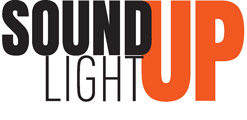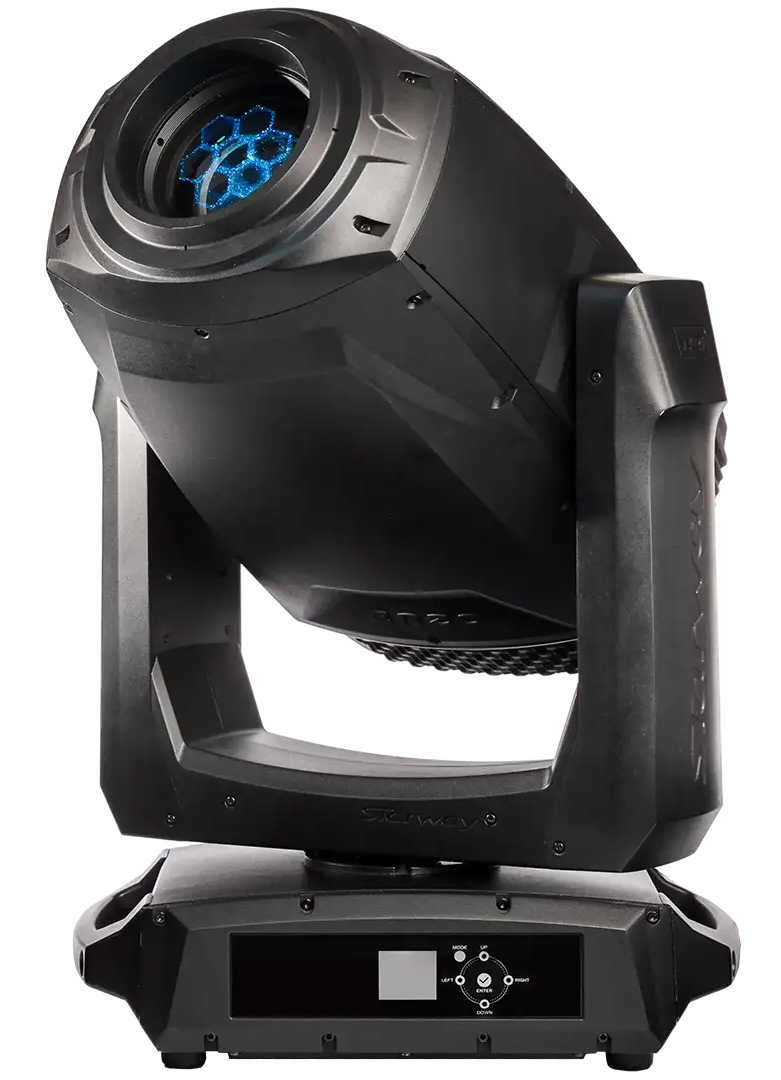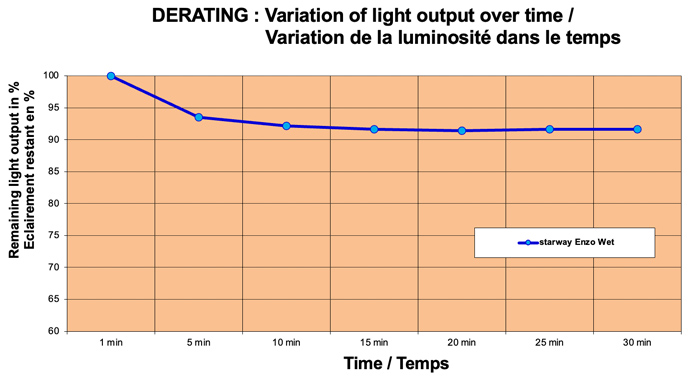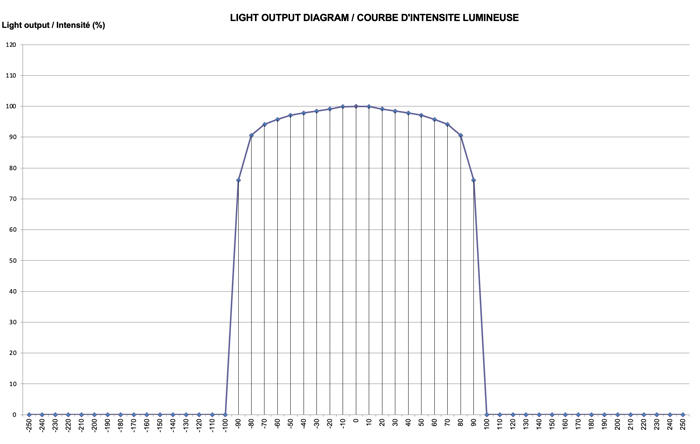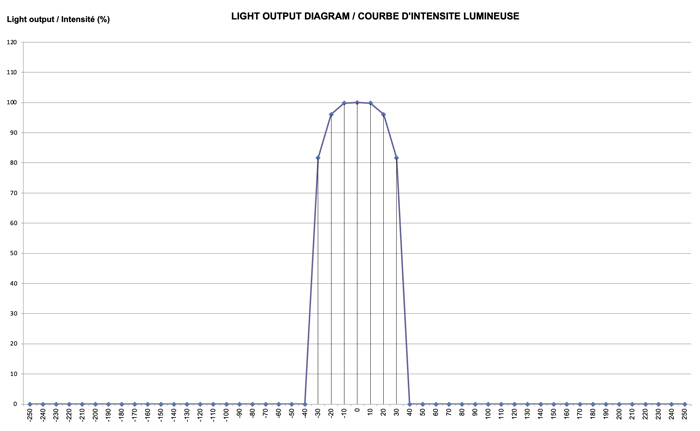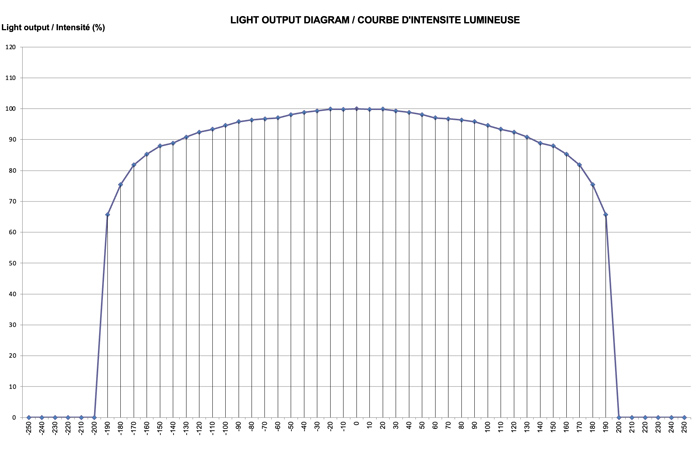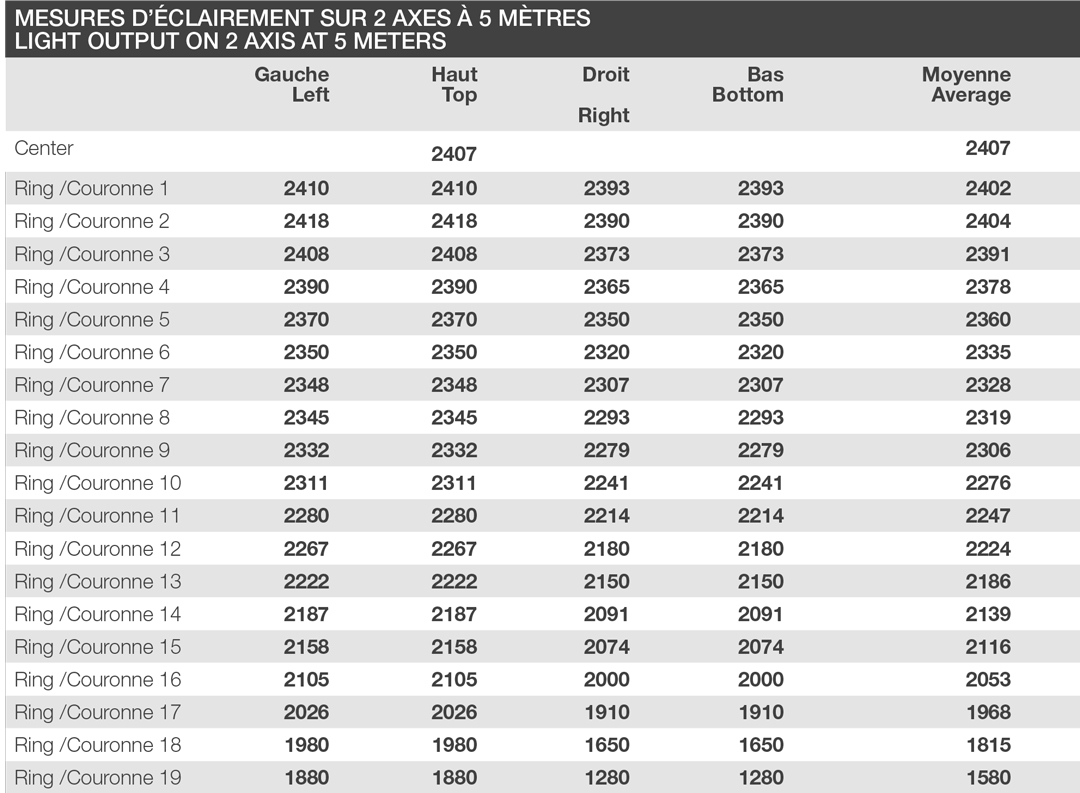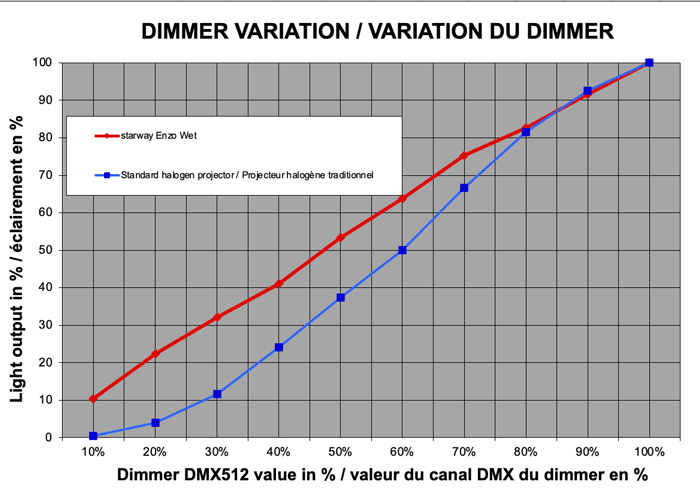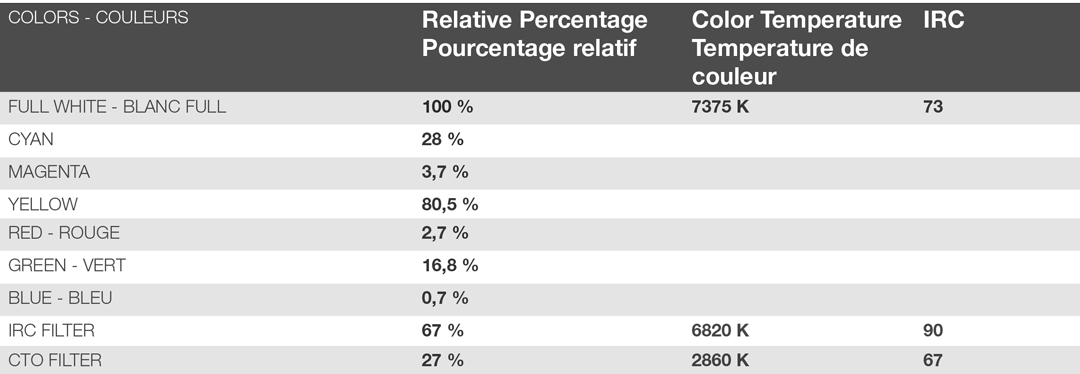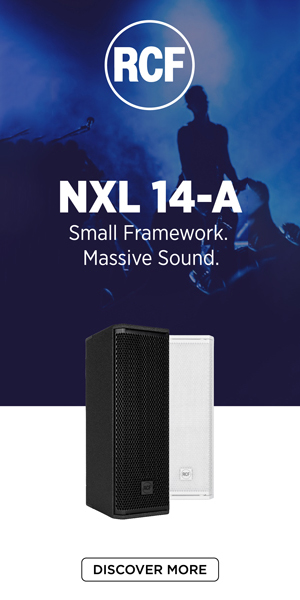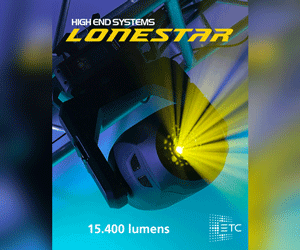Enzo, Modena, Dino, Monza, Superfast… Starway names its moving head fixtures after Italian supercars, names tailored for competition in the automated lighting market.
Among all these names, many WET versions are weather-resistant. Let’s see what’s hidden under the hood of the Profile Enzo WET, which we tested in the LA BS studio.
Packing 600 watts of white LEDs, CMY trichromatic color mixing + progressive CTO, a 5.5° to 45° zoom, an IP65 rating, and weighing 35 kg, the Enzo WET boasts specifications right in line with comparable products.
Upon opening the box, we noticed the fixture was nestled in thermoformed foam, perfectly sized to the fixture – one less worry for its owner.
.
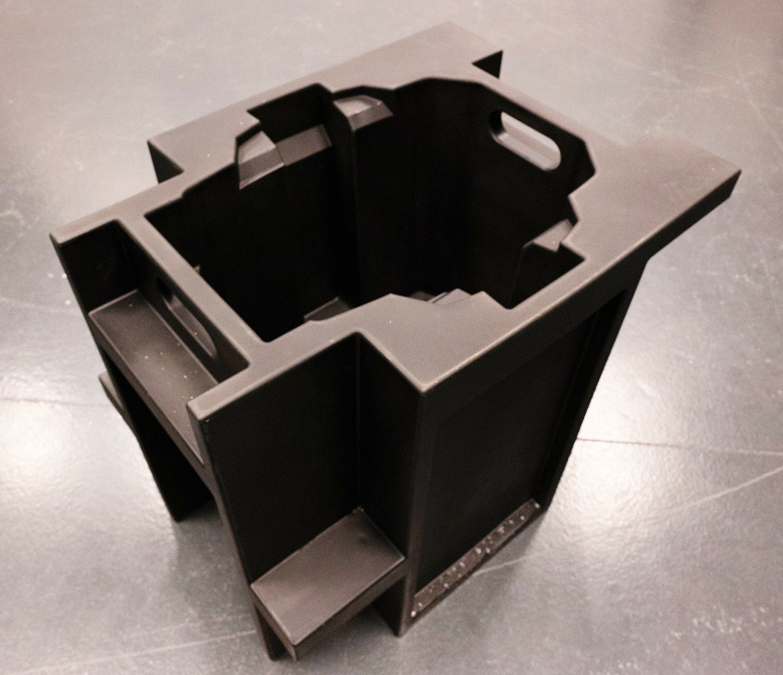
You’ll need two people to get the unit out and flip it over to position it; the IP65 protection comes with a weight gain, admittedly limited to 5 kg compared to the non-IP version. The Enzo WET also differs by having a 50 W more powerful LED and an extra DMX channel because it includes a second (medium) frost.
However, Starway was clever enough to add a compatibility mode to its WET version, you can use it with any mode from the non-weatherproof version’s library. Smart move, though libraries are readily available on Starway’s website in many different formats anyway.
Designed and developed by Starway, the Enzo WET, it must be said, has a discreet look. Its rather versatile design choices do a good job of masking the weatherproofing efforts: you can be IP65-rated and still maintain a certain elegance.
Looking closer, you’ll notice die-cast aluminum covers that can be removed with a 3mm Allen key (more on that later). There are two handles on the base unit and a color display surrounded by a cross-shaped keypad (the classic up/down/left/right buttons), and also “mode” and “enter” keys. In short, there’s nothing here that would throw off technicians allergic to reading user manuals.
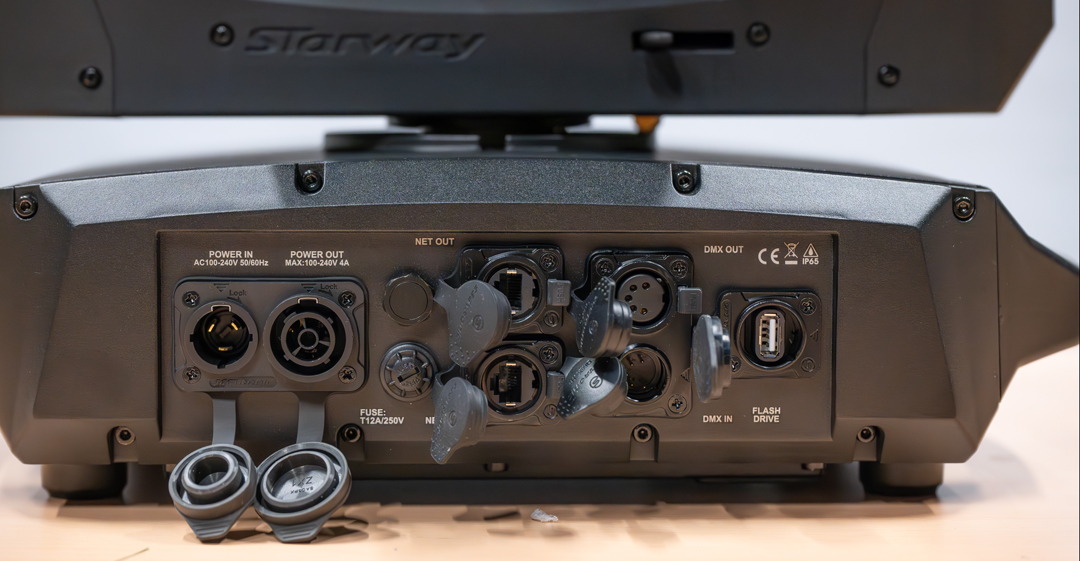
At the rear, the Seetronic connectivity is truly comprehensive. First off, there’s a Powerkon input for power, plus a pass-through output (with a maximum of 4A).
Next, we’re pleased to find two RJ45 ports: the Enzo WET can directly receive and retransmit ArtNet and sACN protocols. It also functions as a node. Finally, there are the essential 5-pin XLR in and out connectors and a USB Type-A connector for software updates.
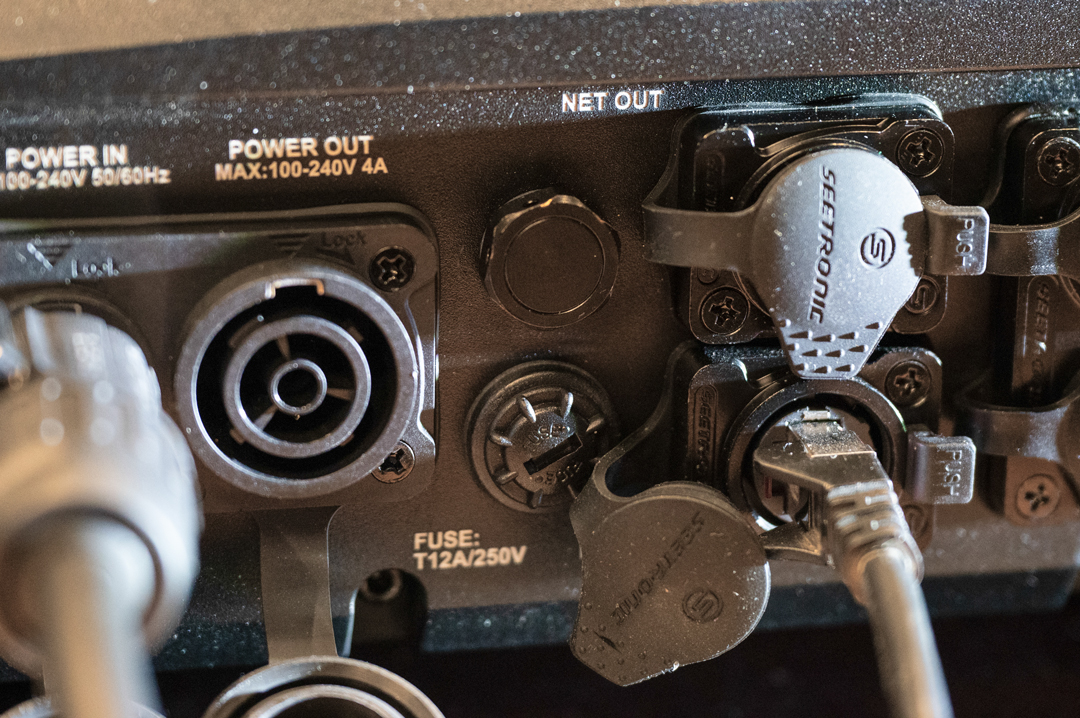
It’s worth noting that you can update not only multiple Enzo WET fixtures in series but even several different Starway fixture models connected to each other –quite a clever feature!
We also note the presence of an accessible fuse holder and the waterproof test connector. For those of you who might think something is missing, you won’t take long to discover the inclusion (as standard!) of Wireless Solution DMX wireless connectivity: it’s hard to do much better.
The key in the ignition, start your motors…
Once the official Starway GDTF library is loaded, you can choose between the two modes (standard 40 channels, or, in our case, enhanced 54 channels, with additional 16-bit channels for color and framing shutters/blades).
We patch the fixture and plug it in. We noticed a rather lengthy reset, over 1 minute 30 seconds. For the rest, no unpleasant surprises appeared as the test progressed. We measured the zoom range, which is 7.78° to 42.6°.
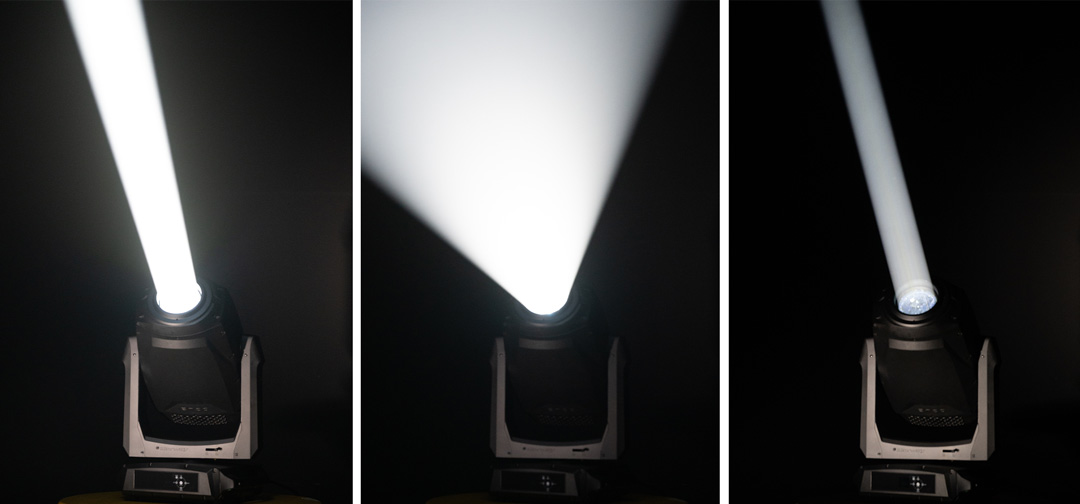
Throughout these values, the illumination remains consistent, and the field is even: the optical assembly truly does its job well. We can easily imagine the Enzo WET being right at home on a front truss at a large festival; the output is there, and the dimming quality is excellent too.
Our derating measurements initially made us fear a somewhat rapid drop in brightness, but that turned out to be unfounded. Even five minutes after powering on, the measurement remains equivalent to over 90% of the initial value, so there’s nothing to worry about on that front. Furthermore, the LED power frequency is adjustable from 9,000 to 25,000 Hz.
The gobos are distributed across two wheels (one with 7 rotating gobos, the other with 8 static). While not all of them are wildly original, they are perfectly usable for both volumetric effects and projection.

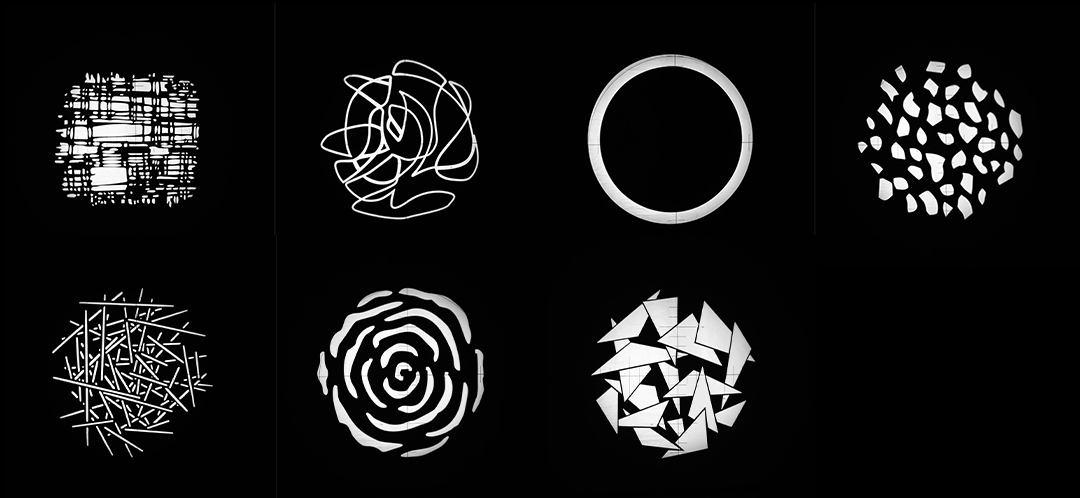

Most importantly, we very easily found defocused combinations of static and rotating gobos that work well.

It’s worth noting that a CTC filter automatically activates when glass gobos are inserted to compensate for the drop in color temperature. This is the last filter on the wheel, and the fixture inserts it in “quickpath” mode, taking the shortest route to avoid any other visible colors during this insertion. However, you do have the option to disable this function in the fixture’s “control” settings.

There is a fairly classic animation wheel that also mixes quite well with defocused gobos. Additionally, the Enzo WET is, of course, equipped with an iris, as well as two prisms: a 3-facet triangular one and a 6-facet linear one.
It also features two progressive frosts (a medium one, and a “heavy” one with a much more radical effect). Finally, we tested the shutter in all its functions: classic strobe, random, pulse it’s all there.

It doesn’t take us long to explore the Enzo WET’s chromatic possibilities and determine its strengths. Saturated colors are clearly its preference; that’s where it truly shines. Achieving beautiful, deep hues is no problem, obviously within the limits attainable by CMY trichromatic mixing.
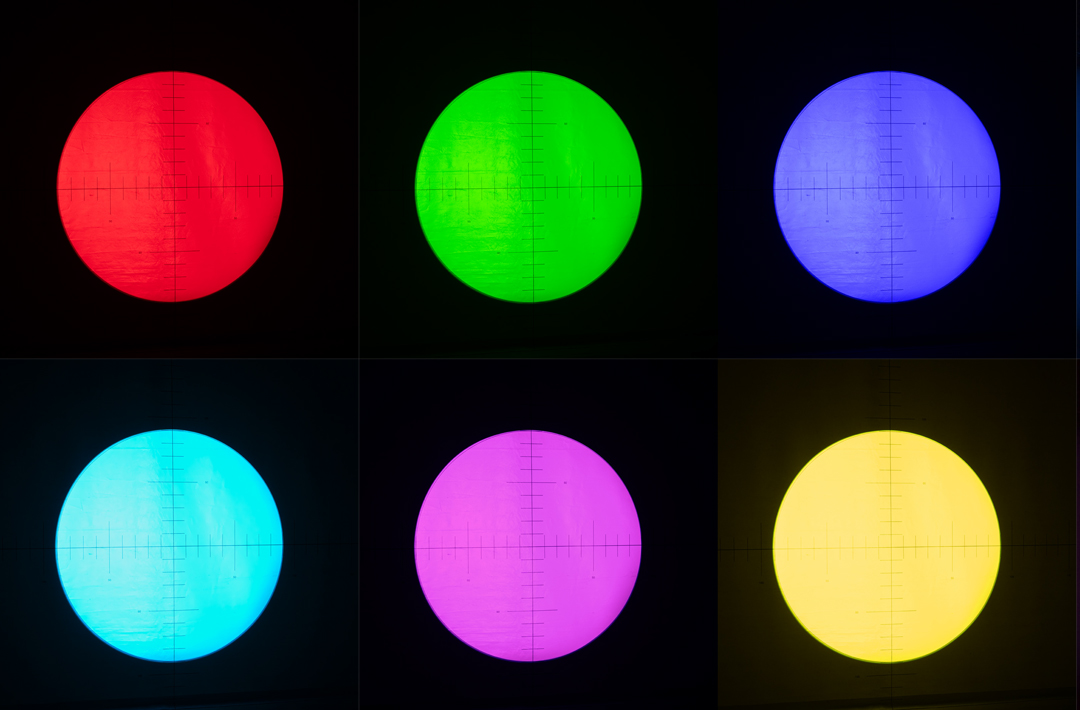
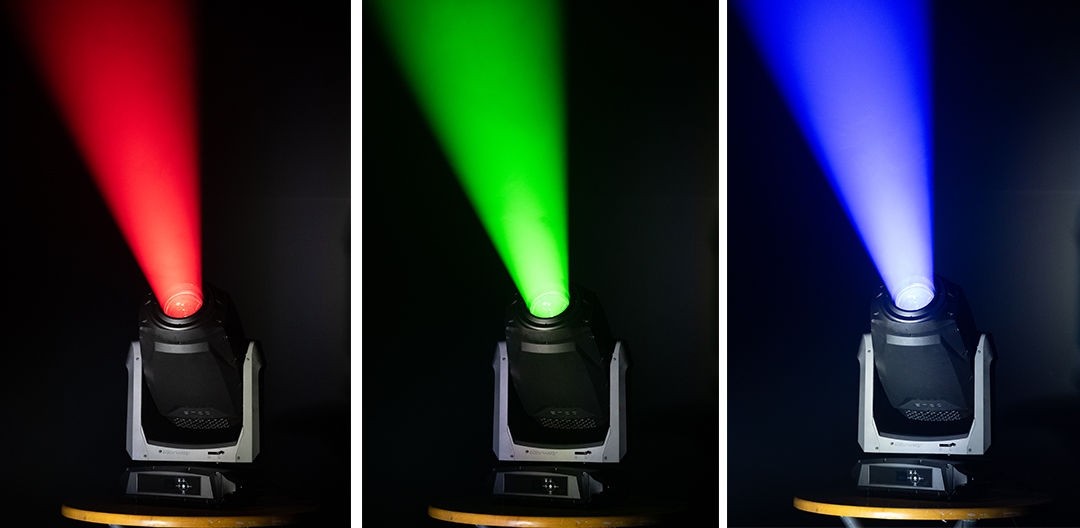

On the other hand, it’s not as strong in delivering pastels or generally very nuanced shades. This is due to a trichromatic system that lacks a bit of subtlety. You’ll notice a small whitish halo inside the beam impact with very slight corrections, which won’t appear perfectly homogenous. However, this is nothing dramatic, and you can, in contrast, rely on the very effective progressive CTO for correcting warm or cool tints.
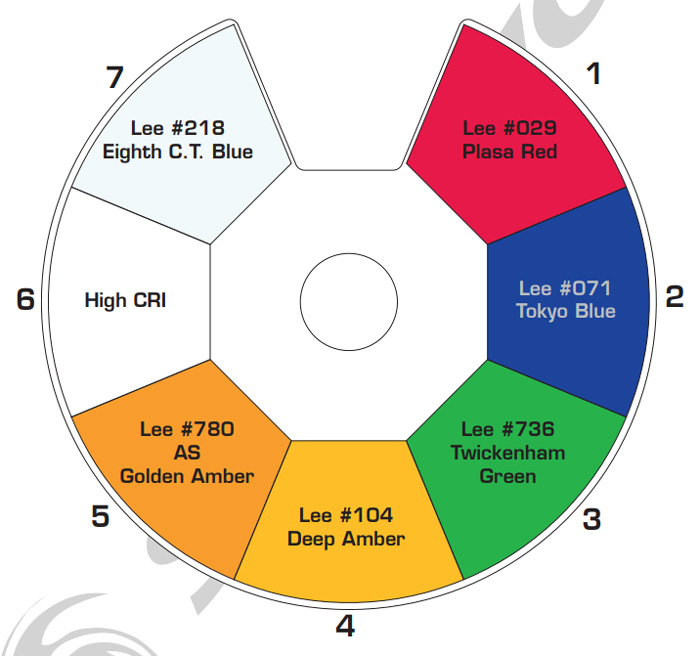
The color wheel features 7 slots with mostly saturated shades. However, it also includes the well-known “High CRI” slot, raising the CRI to 90, and an eighth CTB (Color Temperature Blue) filter, which is always useful. Though, a progressive cool correction would have been preferred. (Always wanting more, aren’t we?!)
Continuing our tests with the internal framing system. We’re pleased to note a fully closing module with highly satisfactory operation. A very minor defocusing is present (unavoidable, as the blades/shutters aren’t perfectly on the same focal plane), but nothing is genuinely problematic.
To assess the consistency of value recall, we had some fun “torturing” the machine a bit: we made it execute movements at the highest possible speed, to opposing positions, and on top of that, with abrupt changes in sharp framing shapes. Ultimately, the Enzo Wet remained unfazed and undisturbed by our rigorous testing. While quicker position changes would be a bonus, the system as a whole performs very satisfactorily.
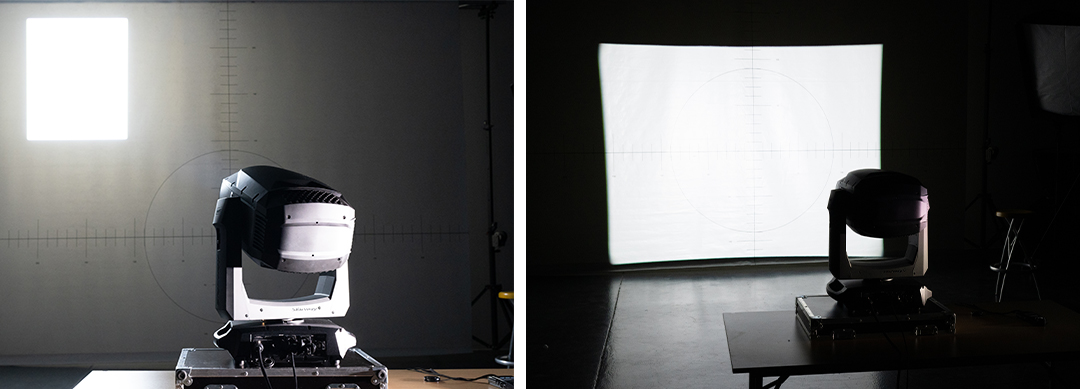
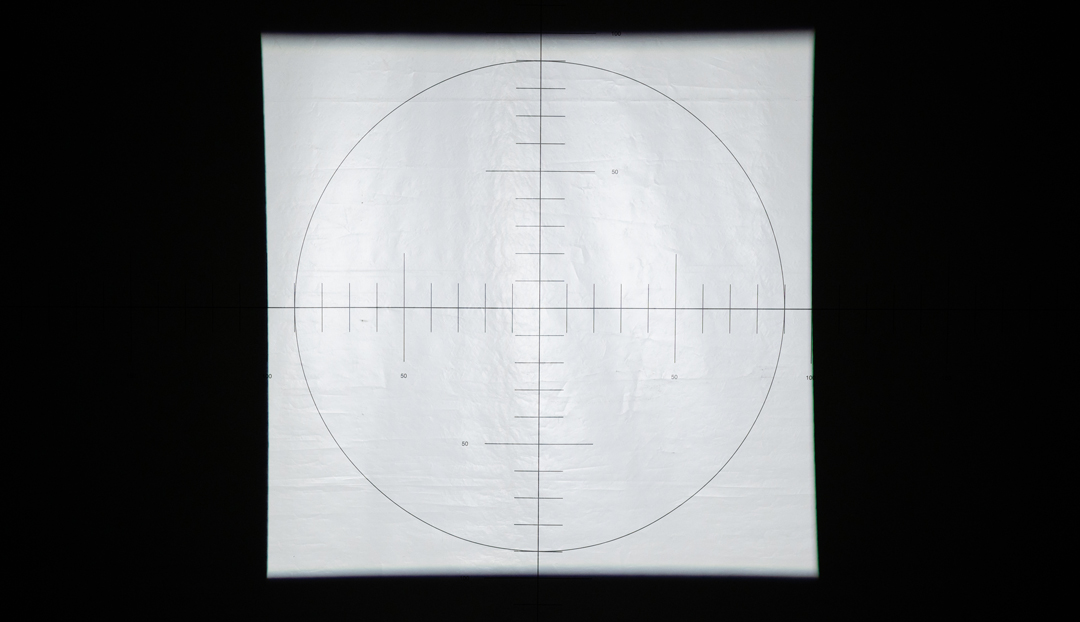
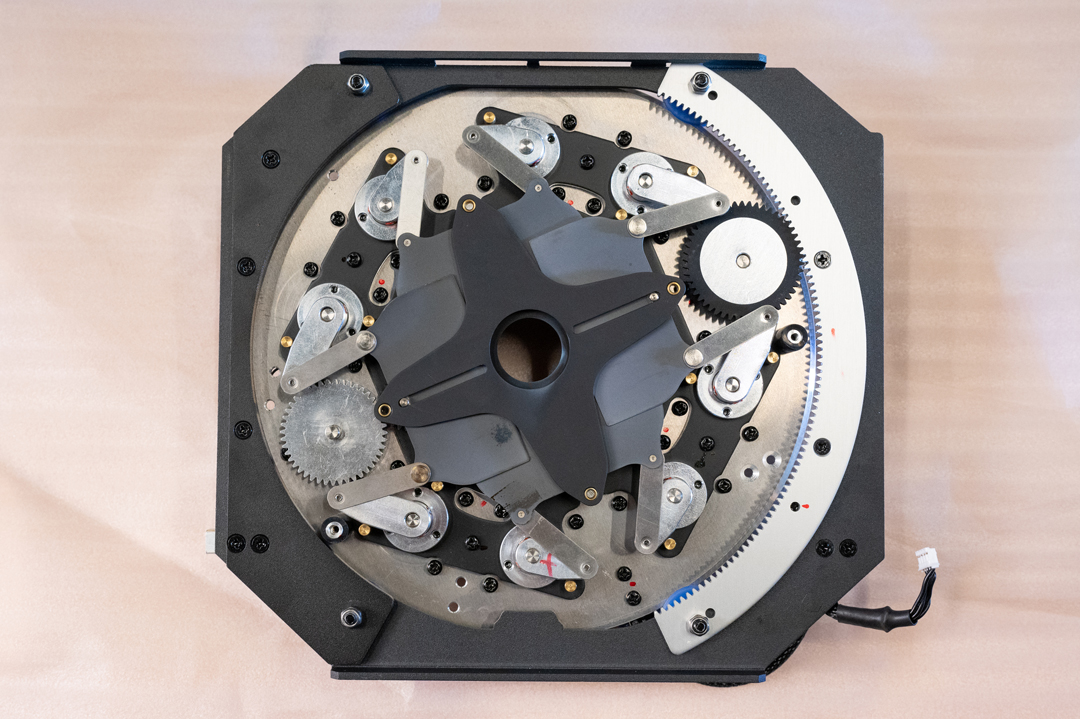
Everyone go outside!
It’s obviously by its outdoor use characteristics that the Enzo Wet should be judged. And here, we’ll see that Starway has delivered a very smart solution. First, the fixture features a pre-heat function: advertised for operating in temperatures between -20 and +70 °C, the Enzo Wet closes its framing shutters and engages this mode below 0°C. This means it won’t get cold when used outdoors in the middle of winter.
The IP protection on this fixture has generally been very well thought out. This type of fixture isn’t just for cold weather use. You can easily imagine it staying outdoors in the middle of summer, and in that scenario, the challenge is the opposite: you’ll need to consider dissipating any excess heat. That’s why the internal ventilation runs continuously. Despite this, we measured a very reasonable noise level, with a maximum of 49 dB at its loudest and just 30 dB at its minimum in “Quiet” mode. There’s really nothing to complain about.
Photometric measurements
Derating curve
With the fixture turned on at full power, we measured the attenuation of light output as a function of warm-up time. The light stabilizes in 5 minutes with an attenuation of less than 9%: a good result.
.
Sharp-edged 20° beam
At 20°, our reference angle, the output at the center is 9,880 lux (10,800 lux when cold) and the lumen output becomes 25,600 lumens (27,950 lm when cold). The light intensity curve, which is flat and very consistent, confirms the even spread of the light.
Smallest sharp-edged beam
At the tightest sharp-edged focus, we measured a projection angle of 7.13°. The light output at the center reaches 52,200 lux (57,000 lux when cold) and the lumen output is 18,020 lumens (19,670 lm when cold).
Widest sharp-edged beam
The angle reaches 42.6° at its sharpest point. The light output in the center is 2,410 lux (2,630 lux cold), and the flux is 25,060 lumens (27,360 lm cold).
The dimmer curves
Enzo Wet propose 4 courbes de dimmer : Linear, Square, INV-Square et S-Curve. Nous avons tracé la Linear de 0 à 100 % et de 0 à 10 %.
.
Colors
The pit stop
It’s time to get the tools out and open up the beast. Of course, with a weatherproof (IP-rated) fixture, don’t expect “quarter-turn” screws that allow for almost immediate opening. Here, patience and a power tool (with a long bit holder, as the screw wells are quite deep) will be necessary. On the other hand, once the covers are removed, you’ll be pleased to find very easily removable modules, and in any order you choose. This greatly facilitates access to the gobos, and truthfully, the entire front end of the Enzo Wet is not difficult to work with: we disassembled it almost completely with great ease, and absolutely nothing posed the slightest problem.
Reassembly, however, will obviously require a bit of patience and precision. There’s nothing difficult about putting the modules back into the head or reconnecting the connectors. It will, however (and quite logically, for that matter), be important to carefully replace the covers to avoid pinching the seals and ensure a watertight reassembly of the fixture. After that, the IP Tester (sold separately) can be connected to either the base unit or the head of the fixture to verify the overall watertightness. This is because the two parts of the fixture are connected by means of a passage along the arm of the yoke. Once this test is complete, the Enzo Wet will be ready to go back to work.
In the end…
Our Enzo Wet clearly isn’t entering the market just for show. Starway has done solid work, offering a weatherproof framing spot with serious arguments that will allow it to face fierce competition. With no major flaws but strong qualities, there’s no doubt it will secure a good position in rental companies’ catalogs.
 What we like:
What we like:
- The saturated colors
- The two useful Gobo wheels
- The framing shutters that can close entirely
- The weight is still reasonable
- The price
- The fixture libraries in different formats
 What we liked less:
What we liked less:
- The long time to reset
- The pastel colors using the CMY mixing aren’t perfect

